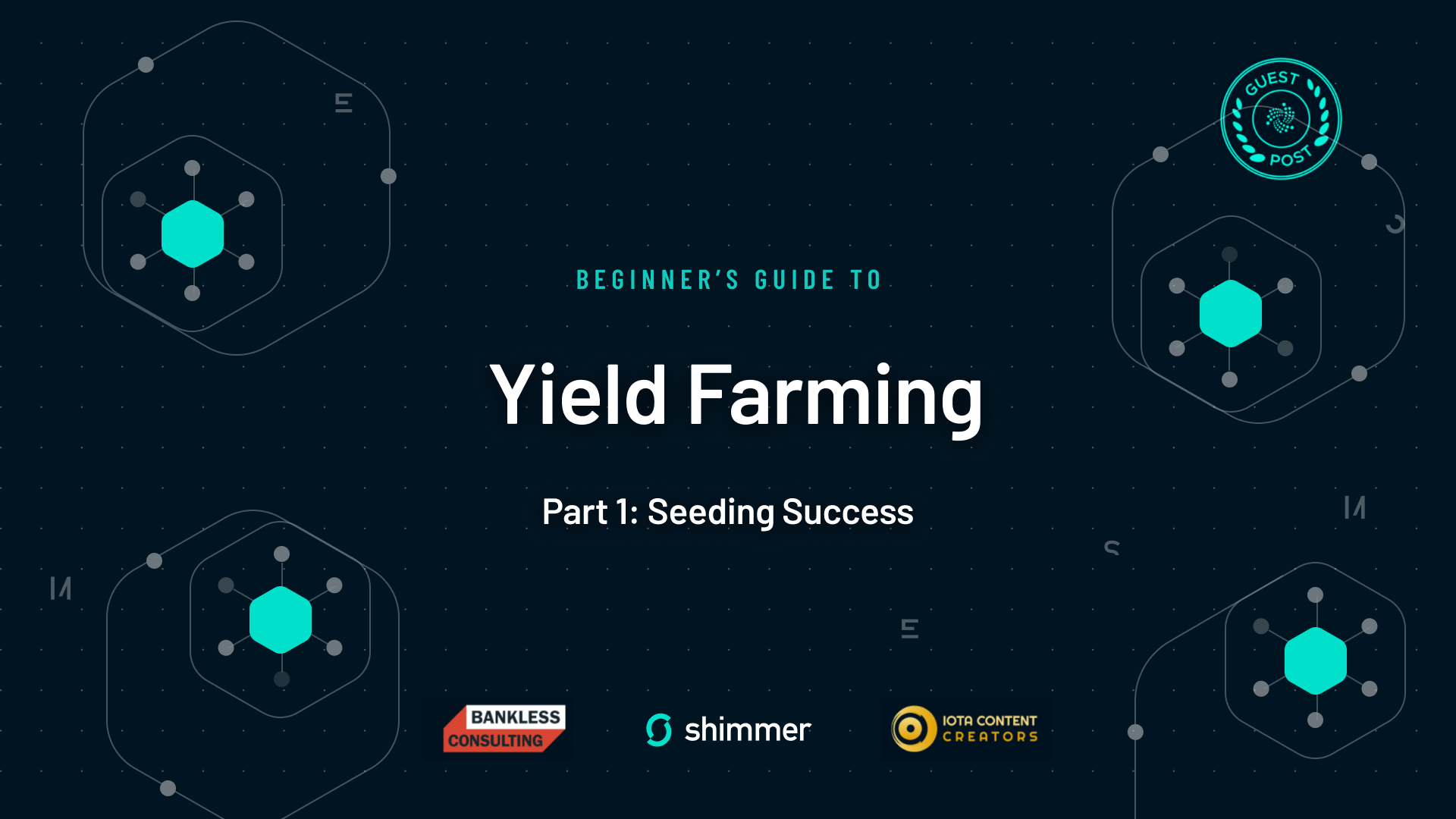Seeding Success: The Power of Yield Farming in Crypto Networks

TL;DR:
The latest part of our Beginner's Guide to DeFi focuses on yield farming, which involves delegating crypto assets to earn interest. The first part of the guide explains how networks use yield farming to attract users and generate value. It introduces the Cold Start problem and explains the terms Annual Percentage Yield (APY) and Annual Percentage Rate (APR) and their relevance to yield farming.
Welcome to the latest instalment of our Beginner’s Guide to DeFi. This three-part blog post will focus specifically on yield farming. In the first part, we explore the meaning and purpose of yield farming before delving into specific strategies and risks involved. Finally, we will explore three popular tools that can assist you as you begin to yield farm yourself. Let’s dig in!
Yield farming is the passive delegation of crypto assets to a network with the intent of generating interest. The term ‘passive’ refers to the fact that you’re deploying your position without constant management needed on your part. The interest rate will change over time, but it is calculable and can be rebalanced based on your goals as an investor. All these strategies involve risk, so please don't consider this guide as investment advice and always do your own research.
Seeding the network: Why networks offer yield farming
Yield farming allows projects to compensate farmers for helping generate the core value of their offering. At the start of a network, it is extremely difficult to generate value. This is commonly known as the Cold Start problem, and it affects many networks, not just blockchain networks.
For example, if you are the only person in the world that has a phone, it’s essentially worthless. You can't call anyone because no one else is on your network. But, as more people get on the network, it becomes incrementally and almost exponentially more valuable.
This is why companies like Facebook and Uber are so successful. They’re able to generate massive amounts of value because they’re able to create ‘walled gardens’ in which people become trapped and can’t take their data to competing networks. And this is why many cryptocurrency projects offer yield farming: they’re trying to seed their networks to get to a point where their network hits critical mass and can grow more organically.
Perhaps we can better illustrate the cold start problem by offering examples of two traditional companies and their solution for seeding their network. First, consider that Uber might offer a 1000-dollar bonus to a new driver who completes 50 rides in the first 30 days. Uber has very localized networks, so every time they enter a new city, they have to seed the new network. This is a huge task! By offering to incentivize new drivers, they are effectively seeding their network.
As another example, Venmo offers to deposit 10 dollars into your app account before you even use their platform. In this case, they’re incentivizing one of two actions: 1) You will transfer the 10 dollars to their bank, meaning you will need to add their bank details to your app, and once all of their details are entered, you will be more likely to continue using the app; or 2) You will send the 10 dollars to someone else. This third party will either be an existing Venmo user or a new user that will also have to choose one of the paths mentioned, helping to further seed the network.
A cryptocurrency protocol also needs to seed its network to help it gain traction. A popular way of doing so is by offering incentives to users in the form of yield farming. The network receives new users and activity to support it, while the farmers receive yield on their assets and other incentives. The rewards are generally relatively high in the early stages of a network, encouraging early participation.
APY and APR
Finally, before proceeding to the different methods of yield farming in the next part of this article, let’s define two important terms that are relevant to yield farming:
Annual Percentage Yield (APY): This figure is useful to those lending assets as an investment. The APY is expressed as a percentage and represents the amount of money (interest) you would realize if you held your investment for one year. Note that this figure assumes that you will be reinvesting the interest you earn, a practice known as compounding.
Annual Percentage Rate (APR): This figure is generally used by borrowers. The APR is also expressed as a percentage and represents the cost of a loan including interest rate, fees, and (if applicable) insurance. If there are no fees or other costs associated with a loan, the APR should be the same as the interest rate. APRs can be fixed or variable depending on the product.
In conclusion, yield farming is a practice that allows investors to passively earn interest on their crypto assets by delegating them to networks. It helps networks generate value and incentivizes early participation. For a deeper understanding of yield farming methods, join us for the next part of this guide.
Beginner’s Guide to Yield Farming
Part 1: Seeding Success: The Power of Yield Farming in Crypto Networks
Part 2: Top Five Methods of Yield Farming
Part 3: Research and Analysis Tools
Also in this series
Crypto Wallets
DEX vs. CEX
 iota-news.com
iota-news.com